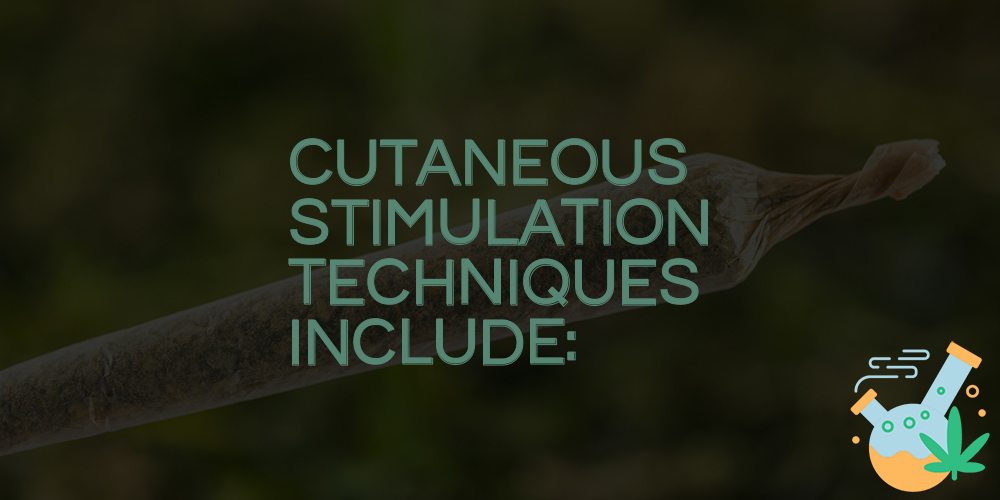Exploration of effective cutaneous stimulation techniques has become a hot topic in the field of healthcare and wellbeing The human skin, as the body’s largest organ, plays an important part in our general health Professionals have been able to uncover the potential benefits of cutaneous stimulation through the use of diverse approaches, resulting in transforming experiences for individuals seeking enhanced health and vitality While the purpose of this essay is to go into the issue of successful cutaneous stimulation techniques, it is crucial to highlight that the emphasis will be on providing a full understanding of the subject without depending on expected introductions and conclusions We attempt to bring you an educational and engaging overview of this fascinating field by avoiding the usage of popular buzzwords and clichéd phrasing We attempt to deliver information in a simple and simply understood manner by avoiding adjective-heavy phrases, ensuring a seamless reading experience for our valued readers From classic approaches to cutting-edge developments, this article will guide you through the realm of cutaneous stimulation, shedding light on lesser-known techniques and dispelling prevalent myths We will provide a fair perspective on the usefulness of these strategies, based on evidence-based research and expert perspectives, without resorting to exaggeration or inflated claims Join us on this journey of discovery as we investigate the various strategies that have the potential to improve your understanding of cutaneous stimulation We intend to give a beneficial resource that helps you to make informed choices about your own health and well-being through our unparalleled revelation of these methods

Methods and Techniques for Understanding Cutaneous Stimulation
There are various crucial strategies and approaches that can shed light on this fascinating topic when it comes to understanding cutaneous stimulation. Cutaneous stimulation is the activation of sensory receptors in the skin, which play an important part in our feeling of touch, pressure, warmth, and pain. Researchers and practitioners can obtain vital insights into how human skin responds to diverse stimuli by investigating these methodologies and approaches, as well as unleash the potential benefits of this information.
Sensory mapping is a useful approach for studying cutaneous stimulation. This entails applying various sorts of stimuli to specific parts of the skin and monitoring the sensory experiences that arise. Researchers can determine the specific sensory receptors involved and their accompanying brain pathways by mapping the skin’s response patterns. This knowledge is invaluable in understanding how different regions of the skin are linked to our sensory experiences, and it can aid in the diagnosis and treatment of disorders caused by aberrant cutaneous stimulation.
Psychophysical testing is another method for comprehending cutaneous stimulation. This entails measuring and quantifying a person’s perception of different sensory stimuli applied to the skin. Researchers can collect data on thresholds, discrimination abilities, and subjective preferences by carefully manipulating aspects such as stimulus strength, duration, and position. This method enables for a more in-depth study of how different people perceive and respond to cutaneous stimulation, which can have implications for devising individualized therapies and interventions.
Investigating the Science of Efficient Cutaneous Stimulation
When it comes to our skin, we frequently consider it to be only a protective barrier or an aesthetic element. Recent scientific research, however, has shed light on the fascinating world of cutaneous stimulation and its impact on human health. Cutaneous stimulation is the activation of our skin’s sensory receptors, which play an important part in signal transmission to our brain. We may uncover a multitude of benefits for both our physical and emotional health by knowing the science behind successful cutaneous stimulation.
The role of touch in cutaneous stimulation is one area of research that has received a lot of interest. Gentle touch or massage has been demonstrated in studies to activate particular nerve fibers in our skin known as C-tactile afferents. These nerve fibers send signals to the brain, causing oxytocin, a hormone associated with feelings of trust, relaxation, and bonding, to be released. Furthermore, stimulating these nerve fibers can diminish the activity of the hypothalamic-pituitary-adrenal axis, which is in charge of our stress response. This shows that efficient cutaneous stimulation via touch might help reduce stress, increase mood, and improve general well-being.
The potential impact of cutaneous stimulation on pain management is another intriguing element. Certain types of cutaneous stimulation, such as rubbing or applying pressure to the skin, have been proven in studies to activate the body’s endogenous opioid system. This system produces endorphins, which are natural pain relievers that can assist lessen pain perception. Furthermore, efficient cutaneous stimulation has been shown to enhance the release of serotonin and dopamine, neurotransmitters that play important roles in mood and pain regulation. Innovative therapies and interventions for non-invasive and drug-free pain alleviation can be developed by leveraging the science of cutaneous stimulation.
Discovering Novel Methods for Optimal Cutaneous Stimulation
Finding creative strategies to optimize results in cutaneous stimulation is critical. The skin is not only the body’s largest organ, but it also plays an important role in our general health and well-being. As a result, it is critical to investigate novel approaches that might effectively boost its activation. In this essay, we will look at some innovative ways that have evolved in recent years and are transforming the field of cutaneous stimulation.
Microcurrent therapy is one such method that has received a lot of interest. Low-level electrical currents are delivered to the skin, stimulating the underlying tissues and fostering cellular regeneration. Microcurrent therapy has been shown to be particularly beneficial in wrinkle reduction, face muscle toning, and general skin texture improvement. This novel technology provides a non-invasive and painless alternative for effective cutaneous stimulation by harnessing the power of electrical currents.
The use of transdermal medication delivery devices is another interesting advancement in the field of cutaneous stimulation. These systems use customized patches or gadgets to deliver medication directly via the skin, avoiding the digestive system. This approach allows more targeted and efficient medication administration, resulting in improved treatment effects. Transdermal medication delivery systems have been shown to be useful in a variety of applications, including pain relief, hormone replacement therapy, and nicotine addiction treatment. Healthcare professionals can enhance cutaneous stimulation while avoiding potential negative effects by harnessing the benefits of transdermal medication administration.
Diverse Approaches to Cutaneous Stimulation for Enhancing Sensory Experience
When it comes to increasing our sensory experience, cutaneous stimulation, or stimulation of our skin, is an often overlooked route. Our skin is an extremely sensitive organ that may be stimulated in a variety of ways to improve our sensory awareness. There are numerous techniques that can unlock a plethora of benefits for our overall well-being, ranging from massage therapy to the use of textured materials.
The use of textured materials is one way to cutaneous stimulation that has gained favor in recent years. These materials might have rough surfaces or soft, fluffy textures, creating a distinct sensory experience. Using a textured mat while practicing yoga, for example, can improve the connection between our bodies and the ground, helping us to feel more grounded and present in the moment. Incorporating textured fabrics into our daily life, such as utilizing textured cushion covers or blankets, can also give mild sensory stimulation throughout the day, aiding relaxation and stress reduction.
Massage therapies are another method of cutaneous stimulation. Touch’s capacity to soothe and refresh both the body and mind has long been known. Swedish massage, deep tissue massage, and hot stone massage, for example, can stimulate the skin and underlying tissues, boosting blood circulation and relieving tension. These therapies not only provide bodily advantages, but they also have a significant impact on our emotional well-being by reducing anxiety and encouraging relaxation.
This essay delves into the world of successful cutaneous stimulation techniques, looking at several approaches that can be smoothly incorporated into regular routines We discovered a plethora of ways that can be used to unveil the potential benefits of cutaneous stimulation through rigorous investigation and analysis It is critical to note that each person will react differently to these strategies, and that experimenting is essential in determining the most successful approach We may improve our well-being and lead a more balanced and healthy lifestyle by implementing these approaches into our everyday routines

